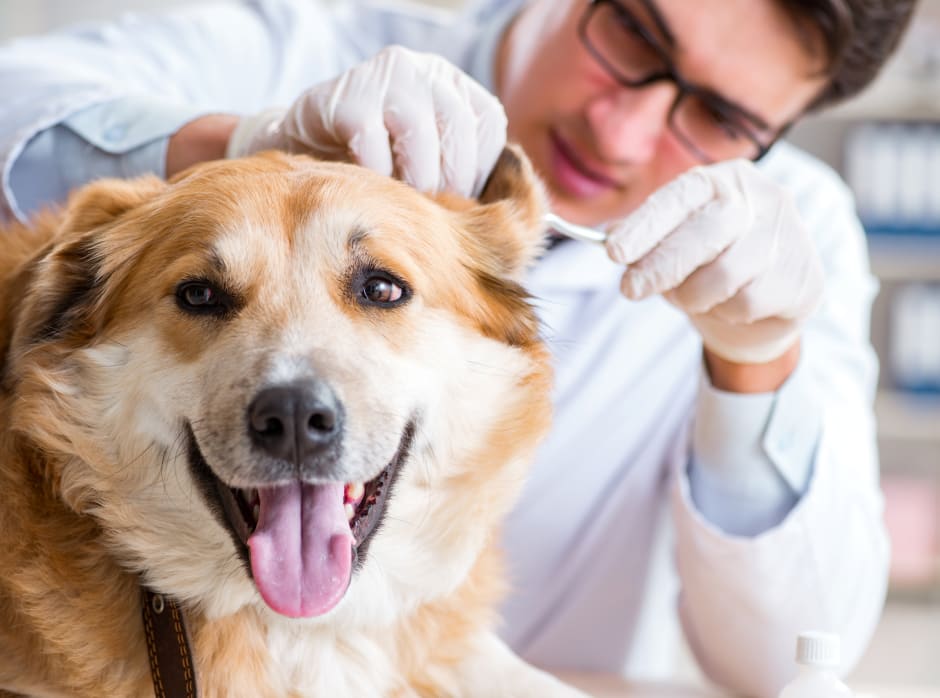As pet owners, very few things are scarier than seeing your fur baby in pain or suffering from an illness. Thankfully, whenever this happens, there is usually hope in calling a veterinarian or visiting an emergency animal hospital so your beloved pet can have the treatment and care they desperately need and quite honestly deserve.
Or at least there used to be.
Nowadays, things are more complex.
The country is experiencing a veterinarian shortage crisis, which, sadly, most people don’t even know about until it is time to get treatment for their pet, and suddenly, they find out that help is not as accessible as it used to be.
Below, we look at what the veterinarian shortage crisis is, how deep it goes, what caused it, and what can be done to solve this significant problem and prevent similar cases from happening in the future.
The Veterinarian Shortage Crisis - What Exactly is it?
Veterinary clinics and animal hospitals pride themselves on caring for pets and providing much-needed treatment for needy animals. Nowadays, however, it is common to see clinics and hospitals divert pet owners and their sick pets away to other destinations – or shut the door on them completely.
Some patients can only receive care for days, weeks, or even months. Over the years, situations like this have gone from occurring occasionally to frequently to being constant.
But what exactly is responsible for this troubling shift? Have veterinarians and animal hospitals suddenly lost their passion for taking care of animals in need?
Well, of course not. The problem is that as more and more pets need relief and emergency treatment, the number of available veterinarians and vet staff to care for them continues to decrease.
It isn’t that veterinarians, vet clinics, and animal hospitals don’t want to help or that they’ve lost their zeal for taking care of animals in need; it is simply that they need the capacity and the personnel to do so.
And they need more capacity and personnel to do so because as the number of newly adopted pets increases, the number of new veterinarians dwindles.
What’s more, even though this is a significant cause of what is now recognized as the veterinarian shortage crisis, it isn’t the only driving force behind it.
What’s Behind the Veterinarian Shortage Crisis?
It is almost only possible to analyze the cause of the veterinarian shortage crisis by mentioning the COVID-19 pandemic. As reported by experts and news outlets, the early months of the pandemic saw vets having to prioritize the most urgent cases.
As the year progressed, this led to a backlog of vet visits for most newly adopted pets. Consequently, a continuing increase in demand for vet appointments ensued afterward.
The AVMA said vet appointments increased by 6.5% between 2020 and 2021.
The pandemic also saw many veterinary staff leaving their jobs because they felt unsafe and worried about becoming sick.
This would have been okay and well-managed if the industry was healthy enough to handle it. But it wasn’t. Even before the pandemic, the veterinary world faced a threatening issue — turnover.
Highly trained personnel were retiring or leaving to pursue other careers, and medical institutions needed help to replace them. In January 2020, the annual turnover for veterinary technicians was 23.4 percent, among the highest healthcare rates.
Analyzing the Impact of the Veterinarian Shortage Crisis
The group experiencing the most impact from the veterinarian shortage crisis are the animals themselves, who, nowadays, have to spend longer in pain than they would typically have to.
And it can even be argued that those needing relief treatments have it more accessible. Several pets needing emergency care are forced to move from hospital to hospital, looking for one that is free enough to accommodate them.
And with the trend going, doing so successfully continues to get much more complicated and may become a miracle.
Of course, there are also pet owners who now struggle to find medical help for their fur children and who not only have to live in pain watching their pets suffer but have subsequently been deprived of the solace that comes from knowing that help is just a vet clinic visit away.
The Impact of the Veterinarian Shortage Crisis on Veterinarians
As we analyze the impact of the veterinarian shortage crisis on pets and pet owners, it is also essential not to forget that this dire condition significantly affects veterinary workers, including veterinarians, vet technicians, vet assistants, and other support workers.
The crisis has led to these people taking on workloads significantly higher than they’re used to, considerably higher than anyone’s supposed to.
This has led to burnout, physical health troubles, and mental health issues. The American Veterinary Medical Association reports that one in six vets has contemplated suicide. The report also stated that veterinarians are three times more likely to die by suicide than the general public.
Offering a Solution
Thankfully, the veterinarian shortage crisis is not one without a solution. The solution requires excellent effort from numerous parties, but it is achievable.
Unsurprisingly, the first place to begin is relatively straightforward – better pay.
Better pay for veterinarians and everyone who works as part of a veterinary team, including technicians, assistants, and other support workers.
Currently, the state of salary in the veterinary world is dire. Some reports mention that veterinary technicians sometimes earn a lower starting salary than McDonald’s workers.
Veterinarians earn less than half what medical doctors make in the country. Add this to the incredibly high student debt that most veterinarians have, and it becomes clearer why the current setup could never work and why the crisis has gotten where it is.
And while the salary issue is an excellent place to start tackling the crisis, other significant changes must also happen.
For instance, the issue of extensive work hours and workload needs to be addressed. Yes, this was compounded by the pandemic, but it has always been an issue that required deliberate fixing.
It is now evident and imperative that a new approach is needed, an approach that can make use of technology and inventive thinking to organize staff members effectively and delegate duties in such a way that veterinary workers are only doing what they’re trained and legally allowed to do, in an efficient manner, so that they don’t feel burned out.
Increasing the Workforce
And, of course, even though the above templates are potentially good approaches to making things better for veterinary staff currently on the job, it is also necessary to increase the workforce and incentivize more professionals to enter the field - if the crisis is going to be averted and future cases prevented.
Expanding the veterinary medicine loan repayment program to eliminate federal withholding tax on service awards will go a long way in attracting more individuals to the field.
Increasing the funds available to recruit veterinarians, particularly for states experiencing the most shortage, will also prove valuable.
Additionally, it is essential to incentivize the addition of veterinarians specifically to the sectors that need them the most.
The Role of Pet Owners in Solving the Veterinarian Shortage Crisis
For pet owners, yes, there is a veterinarian shortage crisis, but it doesn’t mean that all hope Is Lost. As the industry continues to try to fix the problem, pet owners need to do what they can to ensure that their pets are shielded from the impact of the crisis as much as possible.
They can do so by noticing issues and symptoms as early as possible and scheduling appointments immediately, no matter how far out it may seem. Staying on top of pet care routines and carrying out enough preventative care advised by experts is also imperative.
When an appointment is secured, it is essential to be friendly and understanding of the issues that veterinarians and the entire veterinary staff are going through at the current moment.
In Conclusion
The veterinarian shortage crisis significantly impacts pets, pet owners, and the entire veterinary world. But thankfully, some steps could lead to a long-term solution.
Veterinarians and vet staff do what they do because they love caring for pets and pet owners. But they shouldn’t have to work only out of their love for the profession.
They should be well rewarded for their efforts — which are usually immense and getting even more extensive than they can bear.
To do so, better salaries and a more effective duty/workload strategy for the entire veterinary staff are needed. Incentives are also required to attract more highly trained professionals into the field.





